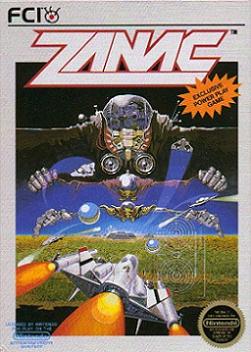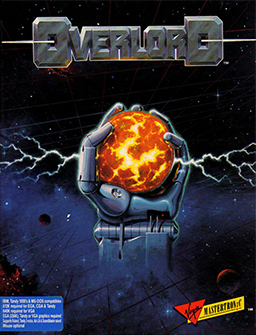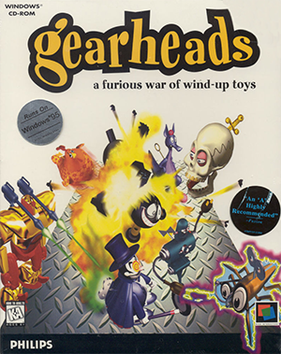Related Research Articles
A stealth game is a type of video game in which the player primarily uses stealth to avoid or overcome opponents. Games in the genre typically allow the player to remain undetected by hiding, sneaking, or using disguises. Some games allow the player to choose between a stealthy approach or directly attacking antagonists, but rewarding the player for greater use of stealth. The genre has employed espionage, counter-terrorism, and rogue themes, with protagonists that are special forces operatives, special agents, secret agents, thieves, ninjas, or assassins. Some games have also combined stealth elements with other genres, such as first-person shooters and also platformers.
A game programmer is a software engineer, programmer, or computer scientist who primarily develops codebases for video games or related software, such as game development tools. Game programming has many specialized disciplines, all of which fall under the umbrella term of "game programmer". A game programmer should not be confused with a game designer, who works on game design.
Game balance is a branch of game design with the intention of improving gameplay and user experience by balancing difficulty and fairness. Game balance consists of adjusting rewards, challenges, and/or elements of a game to create the intended player experience.
Emergent gameplay refers to complex situations in video games, board games, or role-playing games that emerge from the interaction of relatively simple game mechanics.
In video games, artificial intelligence (AI) is used to generate responsive, adaptive or intelligent behaviors primarily in non-playable characters (NPCs) similar to human-like intelligence. Artificial intelligence has been an integral part of video games since their inception in the 1950s. AI in video games is a distinct subfield and differs from academic AI. It serves to improve the game-player experience rather than machine learning or decision making. During the golden age of arcade video games the idea of AI opponents was largely popularized in the form of graduated difficulty levels, distinct movement patterns, and in-game events dependent on the player's input. Modern games often implement existing techniques such as pathfinding and decision trees to guide the actions of NPCs. AI is often used in mechanisms which are not immediately visible to the user, such as data mining and procedural-content generation.

Zanac (ザナック) is a shoot 'em up video game developed by Compile and published in Japan by Pony Canyon and in North America by FCI. It was released for the MSX computer, the Family Computer Disk System, the Nintendo Entertainment System, and for the Virtual Console. It was reworked for the MSX2 computer as Zanac EX and for the PlayStation as Zanac X Zanac. Players fly a lone starfighter, dubbed the AFX-6502 Zanac, through twelve levels; their goal is to destroy the System—a part-organic, part-mechanical entity bent on destroying mankind.
In video games, a bot or drone is a type of artificial intelligence (AI)–based expert system software that plays a video game in the place of a human. Bots are used in a variety of video game genres for a variety of tasks: a bot written for a first-person shooter (FPS) works very differently from one written for a massively multiplayer online role-playing game (MMORPG). The former may include analysis of the map and even basic strategy; the latter may be used to automate a repetitive and tedious task like farming.

Supremacy: Your Will Be Done, released as Overlord in the United States, is a strategy video game designed by David Perry and Nick Bruty and produced by Probe Software.

NHL 96 is a 1995 sports video game developed by EA Tiburon for the SNES, High Score Productions for the Sega Genesis, EA Canada for DOS, and Probe Entertainment for the Game Boy. EA Sports published all versions of the game except the Game Boy version, which was published by THQ. The game is based on the sport of ice hockey and puts the player in control of a hockey team in modes of play such as exhibitions, seasons and playoffs. It is the fifth installment in the NHL game series.
General game playing (GGP) is the design of artificial intelligence programs to be able to play more than one game successfully. For many games like chess, computers are programmed to play these games using a specially designed algorithm, which cannot be transferred to another context. For instance, a chess-playing computer program cannot play checkers. General game playing is considered as a necessary milestone on the way to artificial general intelligence.

Magic: The Gathering – Duels of the Planeswalkers is a video game based on the popular collectible card game of the same name, published by Wizards of the Coast. It was released on June 17, 2009.
Artificial stupidity is a term used within the field of computer science to refer to a technique of "dumbing down" computer programs in order to deliberately introduce errors in their responses.

Gearheads is a strategy video game developed by R/GA Interactive and Philips Media, and published by Philips Media for Microsoft Windows and Mac OS in June 1996. The player deploys wind-up toys to get them across an arena while attempting to prevent toys from crossing from the other side. Players can play against the computer or another player. Single, customisable games can be played, or the player can play a series of games with set rules and a limited number of lives in a tournament.

AI War: Fleet Command is a real time strategy video game created by independent developer Arcen Games. The game was first released on the Arcen Games website and Impulse on June 2, 2009, before getting a Steam release on October 16, 2009 that coincided with the release of version 2.0. AI War blends the 4X, tower defense, and traditional RTS genre to create something that was hailed as unique but with a steep learning curve. Players go up against two artificial intelligence (AI) opponents that are superior to the player. The objective is to destroy the home planets of both AI opponents.

Georgios N. Yannakakis is Director and Professor at the Institute of Digital Games, University of Malta and Editor-in-Chief of IEEE Transactions on Games. He is one of the leading researchers within player affective modelling and adaptive content generation for games. He is considered one of the most accomplished experts at the intersection of games and AI.
Multiplayer online battle arena (MOBA) is a subgenre of strategy video games in which two teams of players compete against each other on a predefined battlefield. Each player controls a single character with a set of distinctive abilities that improve over the course of a game and which contribute to the team's overall strategy. The typical objective is for each team to destroy their opponents' main structure, located at the opposite corner of the battlefield. In some MOBA games, the objective can be defeating every player on the enemy team. Players are assisted by computer-controlled units that periodically spawn in groups and march forward along set paths toward their enemy's base, which is heavily guarded by defensive structures. This type of multiplayer online video games originated as a subgenre of real-time strategy, though MOBA players usually do not construct buildings or units. Moreover, there are examples of MOBA games that are not considered real-time strategy games, such as Smite (2014), and Paragon. The genre is seen as a fusion of real-time strategy, role-playing and action games.

Robin Hunicke is an American video game designer and producer. She is a professor of game design at UC Santa Cruz and the co-founder of Funomena.

Syndicate is a 2012 cyberpunk first-person shooter video game developed by Starbreeze Studios and published by Electronic Arts. The game was released for PlayStation 3, Windows, and Xbox 360 in February 2012.
This is a non-comprehensive list that includes terms used in video games and the video game industry, as well as slang used by players.
Artificial intelligence and machine learning techniques are used in video games for a wide variety of applications such as non-player character (NPC) control and procedural content generation (PCG). Machine learning is a subset of artificial intelligence that uses historical data to build predictive and analytical models. This is in sharp contrast to traditional methods of artificial intelligence such as search trees and expert systems.
References
- 1 2 Crawford, Chris (December 1982). "Design Techniques and Ideas for Computer Games". BYTE. p. 96. Retrieved 19 October 2013.
- ↑ Robin Hunicke; V. Chapman (2004). "AI for Dynamic Difficulty Adjustment in Games". Challenges in Game Artificial Intelligence AAAI Workshop. San Jose. pp. 91–96.
{{cite book}}: CS1 maint: location missing publisher (link) - ↑ Pieter Spronck Archived 2008-12-10 at the Wayback Machine from Tilburg centre for Creative Computing
- ↑ P. Spronck; I. Sprinkhuizen-Kuyper; E. Postma (2004). "Difficulty Scaling of Game AI". Proceedings of the 5th International Conference on Intelligent Games and Simulation. Belgium. pp. 33–37.
{{cite book}}: CS1 maint: location missing publisher (link) - ↑ G. Andrade; G. Ramalho; H. Santana; V. Corruble (2005). "Challenge-Sensitive Action Selection: an Application to Game Balancing". Proceedings of the IEEE/WIC/ACM International Conference on Intelligent Agent Technology (IAT-05). Compiègne, France: IEEE Computer Society. pp. 194–200.
- ↑ Chomsky, Noam. (1965). Aspects of the Theory of Syntax. Cambridge, MA: MIT Press.
- ↑ P. Demasi; A. Cruz (2002). "Online Coevolution for Action Games". Proceedings of the 3rd International Conference on Intelligent Games and Simulation. London. pp. 113–120.
{{cite book}}: CS1 maint: location missing publisher (link) - ↑ G. N. Yannakakis; J. Hallam (13–17 July 2004). "Evolving Opponents for Interesting Interactive Computer Games". Proceedings of the 8th International Conference on the Simulation of Adaptive Behavior (SAB'04); From Animals to Animats 8. Los Angeles, California, United States: The MIT Press. pp. 499–508.
- 1 2 G. N. Yannakakis; J. Hallam (18–20 May 2006). "Towards Capturing and Enhancing Entertainment in Computer Games". Proceedings of the 4th Hellenic Conference on Artificial Intelligence, Lecture Notes in Artificial Intelligence. Heraklion, Crete, Greece: Springer-Verlag. pp. 432–442.
- ↑ Malone, T. W. (1981). "What makes computer games fun?". Byte. 6: 258–277.
- ↑ Wheat, D; Masek, M; Lam, CP; Hingston, P (2015). "Dynamic Difficulty Adjustment in 2D Platformers through Agent-Based Procedural Level Generation". 2015 IEEE International Conference on Systems, Man, and Cybernetics. pp. 2778–2785. doi:10.1109/SMC.2015.485. ISBN 978-1-4799-8697-2. S2CID 19949213.
- ↑ Chanel, Guillaume; Rebetez, Cyril; Betrancourt, Mireille; Pun, Thierry (2011). "Emotion Assessment from Physiological Signals for Adaptation of Game Difficulty". IEEE Transactions on Systems, Man, and Cybernetics - Part A: Systems and Humans. 41 (6): 1052–1063. CiteSeerX 10.1.1.650.5420 . doi:10.1109/TSMCA.2011.2116000. S2CID 8681078.
- ↑ Barry, Tim (1981-05-11). "In Search of the Ultimate Computer Game". InfoWorld. pp. 11, 48. Archived from the original on 2023-02-14. Retrieved 2019-04-17.
- ↑ A. Rollings; E. Adams. "Gameplay" (PDF). Andrew Rollings and Ernest Adams on Game Design. New Riders Press. Archived from the original (PDF) on 2021-05-01. Retrieved 2014-12-23.
- ↑ Bateman, Selby (November 1984). "Free Fall Associates: The Designers Behind Archon and Archon II: Adept". Compute!'s Gazette. p. 54. Retrieved 6 July 2014.
- ↑ "Designing People..." Computer Gaming World. August 1992. pp. 48–54. Archived from the original on 2 July 2014. Retrieved 3 July 2014.
- ↑ Gavin, Andy (2011-02-07). "Making Crash Bandicoot – part 6". All Things Andy Gavin. Archived from the original on 2011-07-07. Retrieved 2016-09-03.
- ↑ Monki (2006-05-22). "Monki interviews Tom Mustaine of Ritual about SiN: Emergence". Ain't It Cool News. Archived from the original on 2006-08-23. Retrieved 2006-08-24.
- ↑ Resident Evil 4: The Official Strategy Guide. Future Press. 4 November 2005.
- ↑ "Left 4 Dead". Valve. Archived from the original on 2009-03-27.
- ↑ "Left 4 Dead Hands-on Preview". Left 4 Dead 411. Archived from the original on 2012-02-20. Retrieved 2009-03-16.
- ↑ Newell, Gabe (21 November 2008). "Gabe Newell Writes for Edge". edge-online.com. Archived from the original on 9 September 2012. Retrieved 2008-11-22.
- ↑ ""Madden NFL 09 Preseason Report", April 25, 2008". Archived from the original on February 14, 2023. Retrieved May 25, 2015.
- ↑ ""Madden NFL 09 First Hands On", May 22, 2008". Archived from the original on February 14, 2023. Retrieved May 25, 2015.
- ↑ Valentine, Rebekah. "EA faces yet another class-action lawsuit connected to loot boxes". GamesIndustry.biz. Archived from the original on 2020-11-12. Retrieved 12 November 2020.
- ↑ Hetfeld, Malindy (12 November 2020). "Class action lawsuit claims EA's dynamic difficulty tech encourages loot box spending". PC Gamer. Archived from the original on 12 November 2020. Retrieved 12 November 2020.
- ↑ McAloon, Alissa. "Class action lawsuit accuses EA of changing game difficulty to push loot boxes". www.gamasutra.com. Archived from the original on 11 November 2020. Retrieved 12 November 2020.
- ↑ Fitzgerald, Jack (2021-02-11). "Notice of Voluntary Dismissal of Action Without Prejudice" (PDF). RECAP Archive.